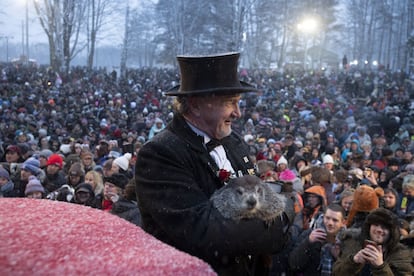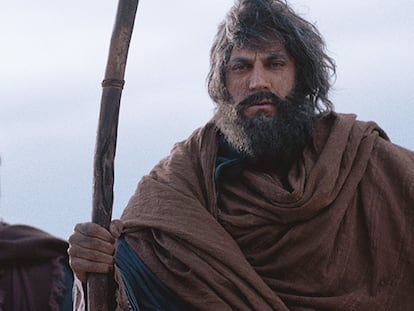Groundhog Day: The European origin of the American tradition
Candlemas is a Christian feast whose traditions influenced this celebration when German immigrants came to the new continent

Groundhog Day is one of the most intriguing traditions in North America. Every February 2, Americans and Canadians have a superstition: if a groundhog emerges from its burrow and sees its shadow, it will retreat to its den and a “second winter” will happen during six more weeks. If the animal doesn’t see its shadow, spring will arrive early. Although studies have found that there is no association between groundhog habits and winter weather, the tradition keeps going.
The biggest ceremony of Groundhog Day is held at Punxsutawney in western Pennsylvania, where the Pennsylvania Dutch (also referred to as Pennsylvania Germans) first started the tradition centuries ago, inspired by a Christian feast called Candlemas, which had a comparable tradition linked to an animal similar to the groundhog and weather prediction.
Candlemas
Candlemas, also known as “the Feast of the Presentation of Jesus” is a Christian feast day which commemorates the presentation of Jesus at the Temple, based on the account narrated in the Gospel of Luke. It is one of the oldest feasts of the church (its earliest record is from the 380s) and it is celebrated on February 2, 40 days after the conclusion of the Christmas season.
One of the most well-known traditions for many Christians to take their candles to their local church in order to get blessed and be used the rest of the year (with each month lighting a candle). This tradition originated in the Roman church and German speaking Christians adopted it.
The Handwörterbuch des Deutschen Aberglaubens, a German encyclopedia, mentions Candlemas (February 2) as an important date for predicting the weather and the fertility of the coming year. In German-speaking regions, the badger was considered a weather prophet for Candlemas. If the badger saw its shadow, it was believed to retreat to its hole, indicating an extended winter. The animal’s characteristics, such as being a small, hibernating mammal dwelling in forests, made it a natural fit for prediction traditions.
German-speaking immigrants in America, particularly those who arrived at Pennsylvania Dutch country between 1727 and 1775, substituted the badger with the groundhog due to similarities in size and behavior. The first recorded mention of groundhogs predicting weather on February 2 comes from a diary entry in 1840 by a Welsh-American storekeeper in Pennsylvania. Over time, the Groundhog Day tradition integrated with local customs, creating a unique celebration that persisted through the years.
The American tradition has a big focus on Punxsutawney Phil. The event is organized by the “Groundhog Club,” who communicate with Phil in a language known as “Groundhogese” to interpret his prediction. Despite being a light-hearted affair, the lore insists that only one Phil exists, and he has been making predictions since 1886, sustained by a special elixir. Phil was first named in 1961, however, the origin of its name is not clear, with some claiming that it may have been indirectly named after Prince Philip, Duke of Edinburgh.
Sign up for our weekly newsletter to get more English-language news coverage from EL PAÍS USA Edition
Tu suscripción se está usando en otro dispositivo
¿Quieres añadir otro usuario a tu suscripción?
Si continúas leyendo en este dispositivo, no se podrá leer en el otro.
FlechaTu suscripción se está usando en otro dispositivo y solo puedes acceder a EL PAÍS desde un dispositivo a la vez.
Si quieres compartir tu cuenta, cambia tu suscripción a la modalidad Premium, así podrás añadir otro usuario. Cada uno accederá con su propia cuenta de email, lo que os permitirá personalizar vuestra experiencia en EL PAÍS.
¿Tienes una suscripción de empresa? Accede aquí para contratar más cuentas.
En el caso de no saber quién está usando tu cuenta, te recomendamos cambiar tu contraseña aquí.
Si decides continuar compartiendo tu cuenta, este mensaje se mostrará en tu dispositivo y en el de la otra persona que está usando tu cuenta de forma indefinida, afectando a tu experiencia de lectura. Puedes consultar aquí los términos y condiciones de la suscripción digital.
More information
Archived In
Últimas noticias
Most viewed
- Sinaloa Cartel war is taking its toll on Los Chapitos
- Oona Chaplin: ‘I told James Cameron that I was living in a treehouse and starting a permaculture project with a friend’
- Reinhard Genzel, Nobel laureate in physics: ‘One-minute videos will never give you the truth’
- Why the price of coffee has skyrocketed: from Brazilian plantations to specialty coffee houses
- Silver prices are going crazy: This is what’s fueling the rally











































